Aquarium play Dutch style
Contrast between colors and layout, plants grown in Dutch Style Aquarium always make an impression, and are used a lot in the World in general. Let's learn about this unique Dutch-style aquarium with Ken!
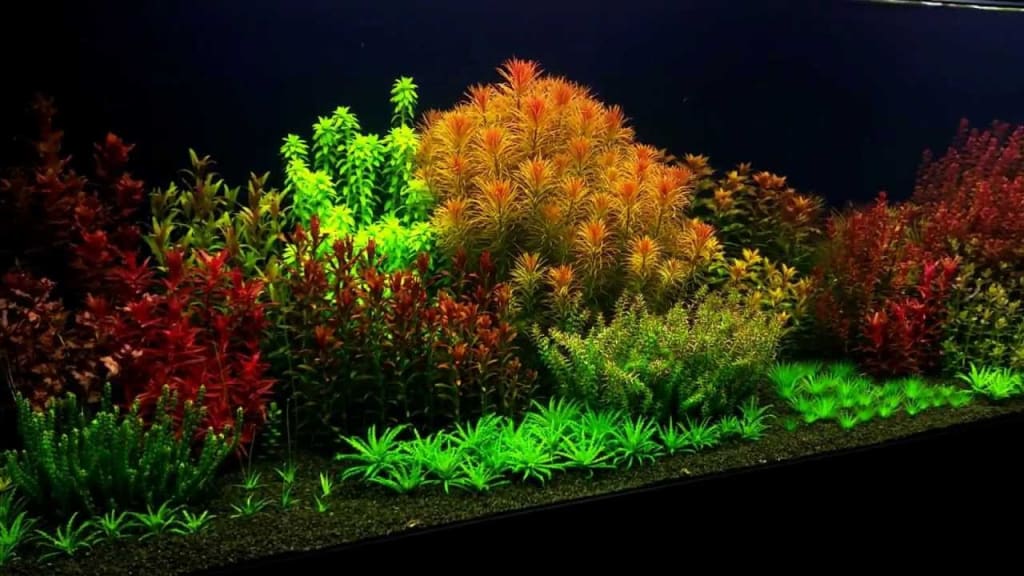
1. Basic layout of Dutch style aquarium
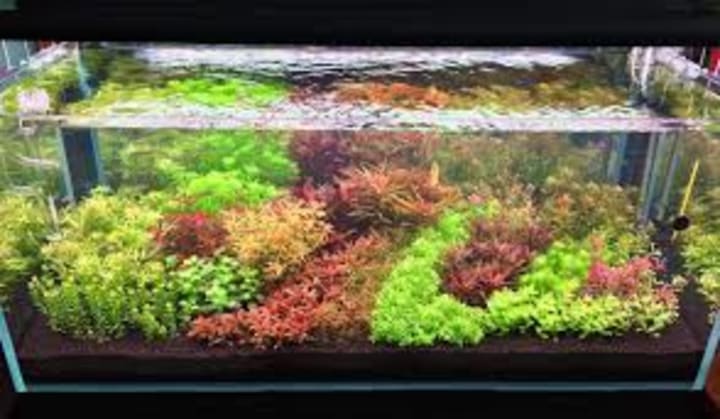
In the Dutch aquatic style, the layout is clearly layered and divided to create depth, a feeling of harmony and neatness. Within a 10cm width of the tank there should be no more than one type of plant, about three types of plants should be used for each foot of aquarium, so a 4 foot (48 inch) tank should ideally have no more than 12 species. Plant parts need to be separated. Newly planted tree tops must not be planted close to each other. There must be a certain distance from 2 ~ 4.5cm depending on the type.Aquatic plants account for up to 75% of the area in the Dutch tank, divided into 3 parts and have a main focal point (plants with highlights such as color or large size) placed at the 1/2 position. or 2/3 tank. This focus is never placed dead center. (At the focal point, large plants with eye-catching colors are often planted such as tiger lotus, spoon orchid...)
Using the “golden ratio rule” which includes color division of sections to create accents is also a way to maintain density, minimalism and tight organization in the tank.
2. The main plant line in the Dutch style aquarium
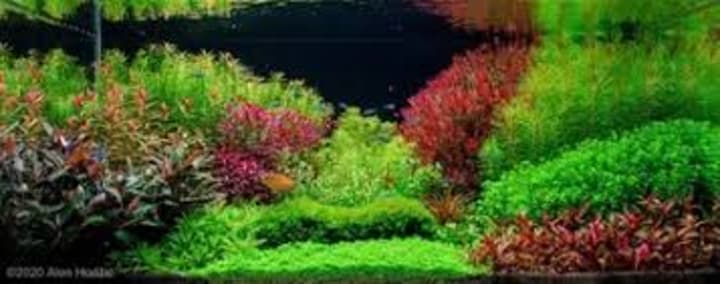
aquatic plants in Dutch tanks often use cut species because of their bright colors and fast growth rate. Besides, the size of each type of plant when mature also affects the layout of the Dutch tank.
The layout of aquatic plants should be arranged in ascending order. Low, slow-growing trees are in the foreground, medium-tall trees are in the middle ground, and fast-growing trees are in the background.
The layout of the plants should also be alternating, creating enough gaps to help you see the rows of plants in the distance without being overwhelming or unsightly. Planting aquatic plants in arcs and curves will create depth for the tank space.
Aquatic plants commonly used in Dutch-style aquariums in Vietnam include:
Rotala indica (Snail Scale)
Lobelia cardinalis (Persimmons)
Limnophila aquatica (Great Stupa)
Bacopa caroliniana (Le Nhi)
Alternanthera reineckii (Blood-heart orchid)
Java (Java Moss)
Ammania gracilis (Red willow)
Hygrophila corymbosa stricta (Dwarf willow)
Hygrophila difformis (Hygrophila)
Hydrocotyle leucocephala (Centella pennywort)
Didiplis Diandra (Diplis Diandra)
Rotala macrandra (Phalaenopsis Phalaenopsis)
Vallisneria sp (Dwarf spoonweed)
Echinodorus "Ozelot" (Dwarf Betel)
3. Aquatic fish in a Dutch tank
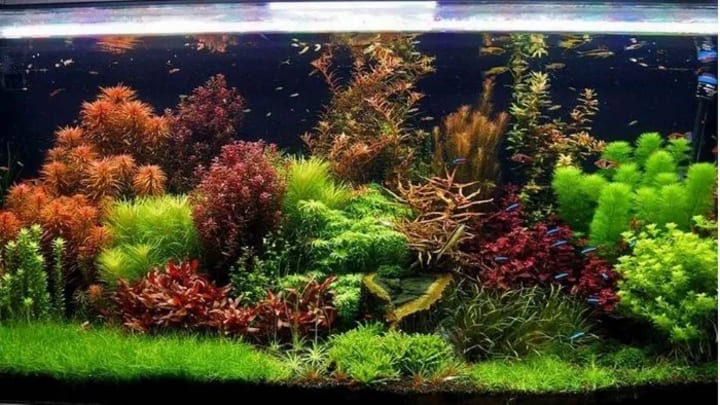
With an aquatic style with many plants and colors, you should choose small fish that swim in schools such as King Neon fish, Blue Neon fish, Triangle fish, Nana fish, Red-headed Squirrel fish, Tram fish...
4. Notes when playing in a Dutch-style aquarium
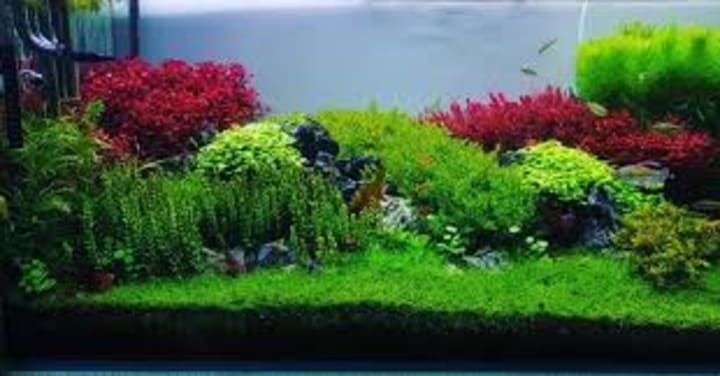
- The foreground needs to be focused on sophistication and lightness, blending with the background of the lake. It can include many bushes of different types, but you need to pay attention to the rules of growing aquatic plants, do not put many types of plants in one bush.
- Aquarium LED lights are extremely important when playing Dutch style, plants need a fair amount of light and lighting time of at least 6 hours/day. You can refer to the WRGB or RGB light lines to stimulate the color and growth speed of plants.
- Provide Co2 according to the volume of the tank to help vegetation grow well, spraying should be from 15 to 20ppm. Co2 tank products can be found sold at aquarium stores.
- Substrate is extremely important because this is the source of nutrients that aquatic plants absorb directly. Using liquid fertilizer is one of the necessary options for providing nutrients, helping plants stay plump and grow well when the fertilizer base runs out of nutrients because of a long period of use.
- Regularly change the water and do not turn on the light for more than the allowed time to avoid moss and brown algae growing in the tank. You can raise additional types of fish to clean the tank such as otto, pencil, moray...
Dutch style aquariums are not like other styles, players need to be creative to design layouts and color combinations. Besides, it is necessary to truly understand in depth the types of plants, how to grow them and care for them to create a balanced ecosystem in the aquarium.
Caring for a Dutch tank
Dutch aquariums need a special care regime to maintain their beauty and color. A few points below are worth noting that you must keep in mind:
Provide enough CO2 according to the volume of the tank, please consult the members on the association to be able to get the CO2 parameters suitable for your tank. If it's too difficult, buy CO2 test kits to be able to measure it. This is too important a factor to help the Dutch aquarium stay colorful by providing enough CO2.Providing adequate nutrition is a necessity for Dutch aquariums. Due to the nature of cut plants, they often absorb nutrients quite quickly, so Dutch aquariums often run out of nutrients quite quickly after the first period of time. This will cause the aquarium to gradually decline if you do not pay attention to providing it with essential nutrients. Using liquid fertilizer is one of the necessary options for providing nutrients, helping plants stay plump and grow well.
Using animals such as fish and shrimp is the best way to prevent algae damage in Dutch aquariums, because algae damage is always one of the main causes of destruction in your aquarium.
A beautiful Dutch aquarium will give viewers unique perspectives depending on the viewing position. Be equipped and learn carefully about the layout and decoration of the aquarium in this style to create an artistic masterpiece yourself.
Narrow-leaved willow ponds have been used for a long time as layouts in Dutch aquariums. These are large cuttings that grow very quickly and provide good visual effects. Because they grow very quickly and densely, it is best to prune them regularly. Small pepper plants are usually planted in bushes and arranged from the front to the middle ground. This type of aquatic plant also does not require too much meticulous care.
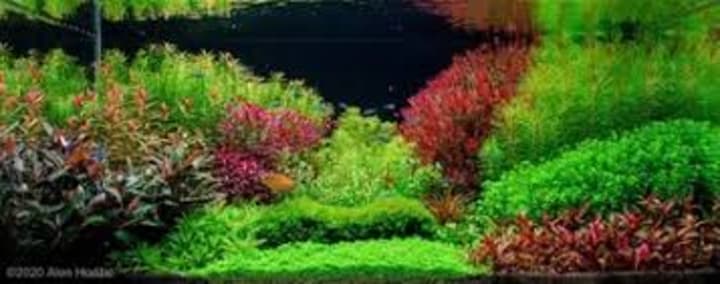
With the knowledge that Ken has acquired and consulted from many sources, we hope to help you better understand Dutch Style Aquarium. Sen Aquatic believes that you will have many interesting experiences with Dutch style and create works of art with a personal impression.
Thanks
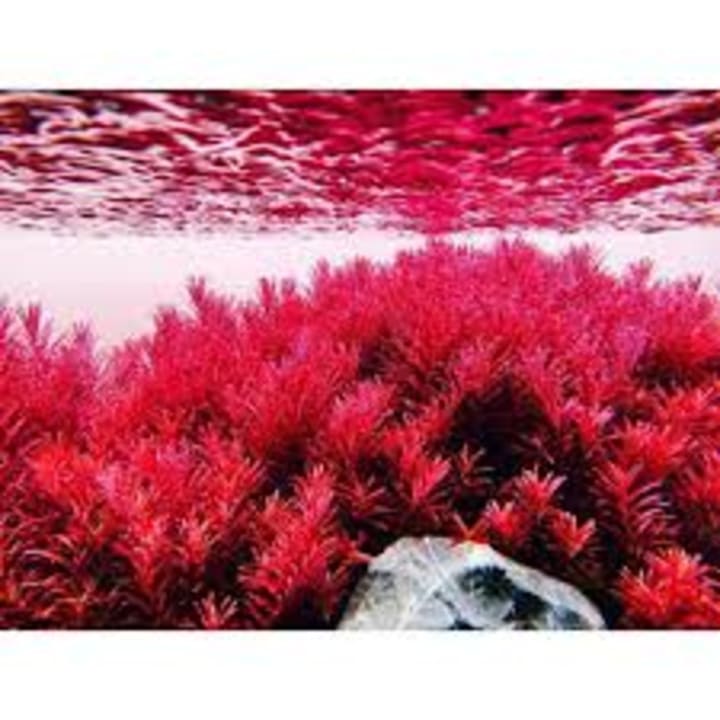
About the Creator
Ken aquariums
Telling stories my heart needs to tell <3 life is a journey, not a competition
If you like what you read, feel free to leave a tip,I would love some feedback
https://www.pinterest.com/Ken_Aquariums
https://s.shopee.vn/1B0pL9ZA9m
Enjoyed the story? Support the Creator.
Subscribe for free to receive all their stories in your feed. You could also pledge your support or give them a one-off tip, letting them know you appreciate their work.






Comments (2)
Very inspiring read, thanks for sharing. Please develop it further so I can have more of this interesting knowledge
https://shop.glassaqua.com/r?id=7b7mds